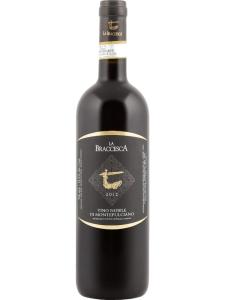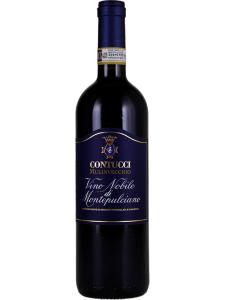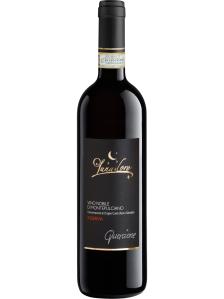Vino Nobile di Montepulciano is one of Italy's classic red wines, and has unquestionably helped Tuscany retain its privileged place on the world wine map. It comes from the vineyards which surround Montepulciano, a picturesque hill town 25 miles (40km) southeast of Siena, southeastern Tuscany. Viticulture here dates back many centuries to Etruscan times. During the 15th Century, the local wine was a favorite among the local Sienese aristocracy, and in the 16th Century it was revered by Pope Paul III, who spoke of the wine's excellent qualities. Vino Nobile di Montepulciano was written about in the poem "Bacco in Toscana" (Bacchus in Tuscany) by Francesco Redi, who described it as "the king of all wines", and the wine was also mentioned by renowned French writer Voltaire in his book Candide.
For a short while in the 19th Century, Montepulciano's red wines went through a period of somnolence, and were often labeled as Chianti (this town is located within the Chianti Colli Senesi sub-zone). Fortunately, with the arrival of the DOC regulation in the 1960s, it regained its stature as a fine and noble wine, and received further dues in 1980 when it was awarded the DOCG classification.
According to DOCG rules, to be labeled as Vino Nobile di Montepulciano, a wine must come from vineyards on the hills which surround Montepulciano. This area is made up of slopes reaching 820–1968ft (250–600m) in altitude, located between two rivers – the Ocria and the Chiana rivers.
The key grape variety grown here Sangiovese (known locally as Prugnolo Gentile), the same variety used to make another of Tuscany's other great red wines, Brunello di Montalcino. Sangiovese grapes must make up at least 60–80 percent of the final wine, and may be complemented by Canaiolo (10–20 percent) and other local varieties permitted in the province of Siena, including the rare, violet-scented Mammolo (Sciacarello).
The aging period for any Vino Nobile di Montepulciano is a minimum of 24 months (36 months for the riserva wines), of which at least 12 months must be spent in oak barrels. Local winemakers long used large Italian botti, rather than the smaller French barriques, as barriques would bring an undesirable level of toasty, vanilla oak flavors to the wine. The larger barrels have a lower surface area relative to the volume of wine they contain, meaning less oak flavor in the finished wine. Oak barrels are used here not so much for their flavor as for the slow, controlled maturation they provide. This tradition has now become enshrined in the Vino Nobile di Montepulciano DOC laws.
Vino Nobile di Montepulciano is usually maroon-red in color and takes on a subtle brick-orange tint over time. It is characterized by its dark cherry and rich plum aromas, ripe strawberry and cherry fruit flavors, and a gently tannic "tea-leaf" finish. It is also known for its medium body, firm tannins, and for the acidity that makes it a particularly ageworthy wine (well-made examples improve gracefully over one or two decades). Some have described the wine as having the perfume of Chianti Classico with the richness of Brunello di Montalcino.
Montepulciano also produces sweet, white Vin Santo di Montepulciano, and Rosso di Montepulciano – a dry red made in a more modern style, with fewer tradition-bound constraints.





